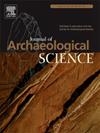Wood ash tempering in archaeological ceramics: an experimental approach for its characterisation using textural, chemical, and mineralogical analysis
IF 2.5
1区 地球科学
Q1 ANTHROPOLOGY
引用次数: 0
Abstract
This paper establishes criteria for identifying wood ash tempering in archaeological ceramics, a practice documented ethnographically across the globe but likely often unrecognised in archaeological studies due to the lack of established diagnostic markers. Through an experimental project employing a multi-analytical approach, this study identifies key indicators of ash tempering, highlighting the utility of thin section petrography for low-fired ceramics and X-ray diffraction (XRD) analysis for high-fired ceramics as particularly effective techniques. Finally, we present two archaeological case studies in which the application of our findings has enabled the identification of likely wood ash tempering.
Recognising this practice is essential, as its absence in archaeological interpretations may result in missed opportunities to understand past craftspeople and technological traditions. Furthermore, the identification of wood ash tempering offers insights into cross-craft interactions and the potential application of circular economic principles, given the frequent use of waste ashes from other industries in ethnographic examples. By refining methods to detect ash tempering, this research contributes to broader discussions on sustainability, resource reuse, and technological innovation in the past.
考古陶瓷中的木灰回火:使用纹理、化学和矿物学分析表征的实验方法
本文建立了识别考古陶瓷中木灰回火的标准,这是一种在全球范围内记录的民族志实践,但由于缺乏既定的诊断标记,在考古研究中可能经常未被认识到。通过采用多分析方法的实验项目,本研究确定了灰分回火的关键指标,强调了薄片岩石学在低烧陶瓷中的应用,以及x射线衍射(XRD)分析在高烧陶瓷中的应用是特别有效的技术。最后,我们提出了两个考古案例研究,在这些研究中,我们的发现的应用使鉴定可能的木灰回火成为可能。认识到这种做法是至关重要的,因为在考古解释中缺乏这种做法可能会导致错过了解过去工匠和技术传统的机会。此外,鉴于在人种学例子中经常使用来自其他行业的废灰,对木灰回火的识别提供了对交叉工艺相互作用和循环经济原则潜在应用的见解。通过改进检测灰回火的方法,本研究有助于对过去的可持续性、资源再利用和技术创新进行更广泛的讨论。
本文章由计算机程序翻译,如有差异,请以英文原文为准。
求助全文
约1分钟内获得全文
求助全文
来源期刊

Journal of Archaeological Science
地学-地球科学综合
CiteScore
6.10
自引率
7.10%
发文量
112
审稿时长
49 days
期刊介绍:
The Journal of Archaeological Science is aimed at archaeologists and scientists with particular interests in advancing the development and application of scientific techniques and methodologies to all areas of archaeology. This established monthly journal publishes focus articles, original research papers and major review articles, of wide archaeological significance. The journal provides an international forum for archaeologists and scientists from widely different scientific backgrounds who share a common interest in developing and applying scientific methods to inform major debates through improving the quality and reliability of scientific information derived from archaeological research.
 求助内容:
求助内容: 应助结果提醒方式:
应助结果提醒方式:


